A new digital resource from the BUFVC brings together the first twenty years of the ground-breaking pre-broadcast information packages from Channel 4 online (http://bufvc.ac.uk/tvandradio/c4pp). Linda Kaye, BUFVC Research Executive, looks at the origins, aims and context of the project and its online delivery as part of a four-year AHRC-funded project undertaken in partnership with the University of Portsmouth.
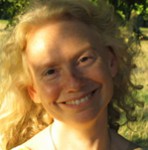 About the Author: Linda Kaye is the BUFVC's Research Executive and is resposnsible for the News On Screen web resource and is part of the team behind the Channel 4 and British Film Culture project (www.c4film.co.uk/). Her publications include Projecting Britain: The Guide to British Cinemagazines (2008), co-edited with Emily Crosby.
About the Author: Linda Kaye is the BUFVC's Research Executive and is resposnsible for the News On Screen web resource and is part of the team behind the Channel 4 and British Film Culture project (www.c4film.co.uk/). Her publications include Projecting Britain: The Guide to British Cinemagazines (2008), co-edited with Emily Crosby.
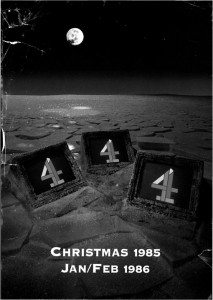 Spinning the Content into Context
At the turn of this century, in the early days of mass digitization, it used to be said that content was king. Then as content flooded the market, the new king was the means of locating it, metadata. The new heir waiting in the wings is context, the element that gives both meaning and renders them unique. Chris Griffin-Beale, Channel 4’s first Press Officer, had a profound understanding of the value of context and it is this which permeates the Channel’s ground-breaking press information packs. He completely re-worked the accepted press information formula, transforming a few of typewritten pages into a booklets that supplemented a comprehensive seven day listing with detailed film notes, programme highlights, reviews and stills. He helped journalists to understand the why: why the programme was interesting, why the film was important and why they should be writing about them.
Spinning the Content into Context
At the turn of this century, in the early days of mass digitization, it used to be said that content was king. Then as content flooded the market, the new king was the means of locating it, metadata. The new heir waiting in the wings is context, the element that gives both meaning and renders them unique. Chris Griffin-Beale, Channel 4’s first Press Officer, had a profound understanding of the value of context and it is this which permeates the Channel’s ground-breaking press information packs. He completely re-worked the accepted press information formula, transforming a few of typewritten pages into a booklets that supplemented a comprehensive seven day listing with detailed film notes, programme highlights, reviews and stills. He helped journalists to understand the why: why the programme was interesting, why the film was important and why they should be writing about them.
The press packs are at the heart of a new BUFVC online resource developed, in partnership with the University of Portsmouth and Channel 4 Archive, as part of the AHRC project ‘Channel 4 Television and British Film Culture’ (2010-2014). Two decades of weekly packs, as well as seasonal highlights, can now be searched and browsed (by UK Higher Education/Further Education and BUFVC members only) providing the researcher with a unique insight into an extraordinary roster of programmes that revolutionized British television. True to the contextual spirit that informed the packs themselves, we also wanted to help the user to understand the why: why they are valuable and why they should be using them. So the collection is enhanced by articles, research case studies, timelines and from May 2014, key elements of the project’s website.
A Contextual Approach Context is a late Middle English word derived from the Latin contextus; the sum of con – ‘together’ and texere ‘to weave’. Back in 2008 when Justin Smith (University of Portsmouth), Paul McDonald (University of Nottingham) and I were hatching this AHRC project we were all clear that we wanted to do more than digitize a collection and create a searchable online database. We wanted to weave together the research and digitisation elements as much as possible. In many research projects the digital element is a stand-alone output that often only engages with its own researchers at the point of publication. Our aspiration for this project was to literally thread the members of the research team, the Principle Investigator, the Research Assistant and the PhD students, into the digital process from the digitisation of the press packs to the development of the web interface. We were a little vague on how this would be achieved but it clearly meant that a fundamental change to the way we both worked was needed and this required time, energy and a willingness to learn from each other.
… as content duplicates itself at an increasing rate, it is the contextual element that will add value to digital collections
From a BUFVC perspective a key objective in adopting this approach was to instill a higher level of digital literacy, both in terms of skills and critical understanding, with the research team. This would then enable them to make truly informed decisions about the development and design of the resource, from the search interface to the layout of the site itself. This meant not only explaining technical digital processes but crucially how they linked up and affected each other. On a personal level, having delivered one ‘basic’ explanation to a room full of blank faces, it really forced me to think about the language I used and the knowledge I took for granted. How could I make these technical processes more transparent and worthwhile knowing? Basically I had to start de-constructing what we did in order to give it relevance. For example, one of the first statements I made was that the filename given to each scanned page is one of the most important decisions made in a digitisation project. Now I had to justify it, explaining that the components of that filename are the means by which we can identify the page as a single element, separated from the rest of the pack. It is therefore fundamental to access not simply in terms of retrieval but crucially how we search for and present it online. These decisions made at the beginning of the digital process are key in the final stages.
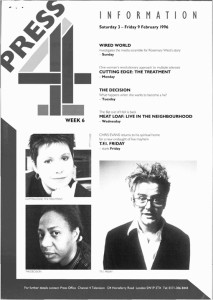 Gradually we each gained a greater understanding of our work and started to speak a little of each other’s language. This really bore fruit when we delivered the search prototype for the digitised press packs. This included the search form, the search results page and the page with highlighted search term displayed within our bespoke pdf viewer. One of the major requirements we took away from this workshop was that a separate browse mechanism was essential. Users had little idea of a whole pack or indeed the collection itself. Within a digital environment the sense of the whole takes on greater significance because by its very nature, the process of searching reduces everything within its scope to fragments. This is especially pertinent in the case of print collections. As a result you can see the veins of the leaves with astounding clarity but lose sight of the tree and ultimately the wood entirely. In order to correct this myopia we integrated the browse capability into the pdf viewer. So once users had found their highlighted search term on a page, they then had the option either to move to the next result or to browse that pack, either by page or through thumbnails. Essentially we were restoring context to the packs.
Gradually we each gained a greater understanding of our work and started to speak a little of each other’s language. This really bore fruit when we delivered the search prototype for the digitised press packs. This included the search form, the search results page and the page with highlighted search term displayed within our bespoke pdf viewer. One of the major requirements we took away from this workshop was that a separate browse mechanism was essential. Users had little idea of a whole pack or indeed the collection itself. Within a digital environment the sense of the whole takes on greater significance because by its very nature, the process of searching reduces everything within its scope to fragments. This is especially pertinent in the case of print collections. As a result you can see the veins of the leaves with astounding clarity but lose sight of the tree and ultimately the wood entirely. In order to correct this myopia we integrated the browse capability into the pdf viewer. So once users had found their highlighted search term on a page, they then had the option either to move to the next result or to browse that pack, either by page or through thumbnails. Essentially we were restoring context to the packs.
Context in Practice Our policy with the rest of the microsite was to provide guidance and advice but to maintain a hands-off approach. So it was the responsibility of the research team to develop the site plan and once we had inserted the structure, to populate it with content. In order to facilitate this we decided to relinquish control, give them full editing rights and let them loose! Again the lesson we learnt here was assumption, we thought creating pages and editing within Wordpress would be easy for them to pick up. Most of us working within a digital environment are used to diving in and working things out for ourselves. We simply did not appreciate what a huge learning curve this represented both in terms of basic skills and understanding. Naturally the team wrote their articles and research case studies on using the packs and pasted them into the site. When we first looked at the elements there was one block of text after another filling the entire screen. So again, we had to take a step back and think about what we knew, that people interact with the screen in a visual way and text should be presented within a visual hierarchy. Paragraphs should be broken down into smaller chunks, images and block quotes inserted, anything that makes it easier on the eye. Writing within an online environment is a very different proposition to publishing in print.
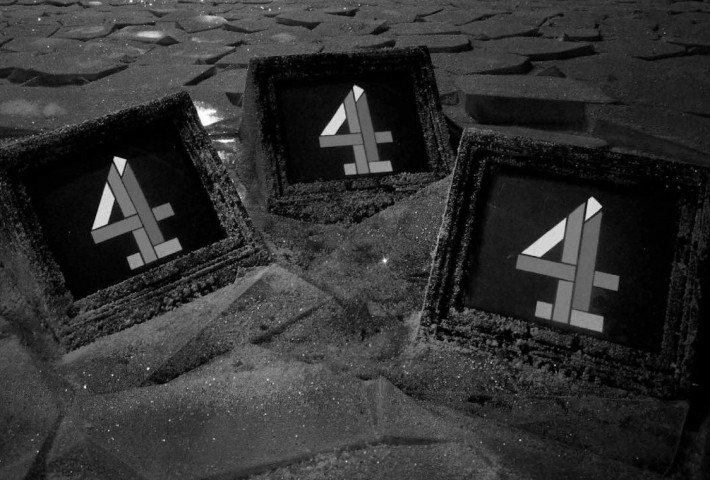
We are hoping to make this an easier transition for future partners by producing a basic editing Wordpress handbook together with some tips about writing for the screen. The research team to their credit have absorbed all these new ideas and put them in practice, as can be seen with Ieuan Franklin’s brief history of TV Listings and Justin Smith’s piece on Channel 4’s experiment with The Red Triangle. The design of the site however, remained in our hands and some of the content such as Laura Mayne’s Film on Four timeline challenged us to come up with an interesting and effective form of presentation. The result was so clear and effective that I completely revised my Digital Journey piece so that I could use it.
The other major change in work practice from a BUFVC viewpoint was working closely alongside one of the PhD students, Rachael Keene, with the idea of exploring how research questions might alter, and possibly change altogether, as interaction with a primary source collection changed from an analogue to digital format. Although we tried to structure this, it was by nature quite an organic process that had at its heart an increasing awareness of the difference in approach as ‘digital’ knowledge accumulated and the thesis itself became more defined. The fact that Rachael had spent time researching the hard copy collection before it was scanned was invaluable when we were discussing how we could help the user to understand what a press pack was made up of. Her working knowledge of the originals helped her to ‘fill-in’ the gaps for the online user by creating the Structure of a Press Pack section. She was responsible for selecting all the representative section pages and writing the glossary notes for each one and also provided the History of the Channel 4 Press Information Packs.
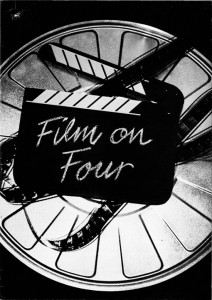 These were some examples of the way in which Rachael influenced the development of the resource but there were occasions when the process also worked in reverse. At one point we experimented with converting the programme listings section within each pack into an XML format, basically categorizing the text within a hierarchical structure. So, each programme would have a start time, a title (possibly a series title as well), a synopsis and so on. When the results came through we found that there was information that seemed to be a title but did not fit in either the title or series fields. How should we categorise ‘Film Four presents First Love: Secrets’? Was 'The Eleventh Hour' a series? If it was a series where did we put series within it? Could a programme be part of two series? Were these seasons or strands? How could these be defined? We decided to ask the research team to categorise a problematic selection of programmes in terms of three fields: series, season and strand. So began a series of engaging discussions that saw a framing and then re-framing of Channel 4’s scheduling over two decades. More significantly, it resulted in Rachael shifting the focus of her research and structure of her thesis. An insight into this can be found in her comprehensive research case study, Film Review Shows.
These were some examples of the way in which Rachael influenced the development of the resource but there were occasions when the process also worked in reverse. At one point we experimented with converting the programme listings section within each pack into an XML format, basically categorizing the text within a hierarchical structure. So, each programme would have a start time, a title (possibly a series title as well), a synopsis and so on. When the results came through we found that there was information that seemed to be a title but did not fit in either the title or series fields. How should we categorise ‘Film Four presents First Love: Secrets’? Was 'The Eleventh Hour' a series? If it was a series where did we put series within it? Could a programme be part of two series? Were these seasons or strands? How could these be defined? We decided to ask the research team to categorise a problematic selection of programmes in terms of three fields: series, season and strand. So began a series of engaging discussions that saw a framing and then re-framing of Channel 4’s scheduling over two decades. More significantly, it resulted in Rachael shifting the focus of her research and structure of her thesis. An insight into this can be found in her comprehensive research case study, Film Review Shows.
... a new form of curation, merging the old and new, must emerge to ensure that these contextualized resources do not just survive but continue to live
Context & Curation The benefits of this contextual approach have been manifold. This closer working relationship between the developers and the users of the material has given us greater confidence that what we have produced truly meets the requirements of researchers. From an academic perspective there can be little doubt that it has improved the digital literacy of the research term. This encompasses both digital skills, how to present their research within an online environment, and critical understanding, an awareness of the difference between using digital and analogue versions of the same primary source collection and more specifically, how the development of the digital resource can frame the questions researchers may ask of it. Essentially an integrated work practice has enabled us to create an integrated resource as opposed to a digitized collection that the user is left to discover and use in isolation. The wealth of supplementary material not only enhance the use and understanding of the press information packs, they have given them meaning and rendered them unique. As content duplicates itself at an increasing rate it is the contextual element that will add value to digital collections.
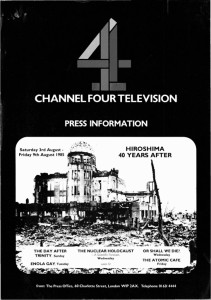 If context is essential to gain a fuller understanding of the digital collection, then surely curation is the real key to its sustainability as a resource. Digital outputs from humanities research projects are viewed, often for practical financial reasons, as finite. They are published alongside journal articles and the book but crucially these objects operating within a digital environment possess an infinite capacity for obsolescence. The host institution may ensure that the search still operates, that the information is still accessible but unless it continues to respond to the changing requirements and expectations of its users, it will, over time, gradually fall into disuse. It will join an increasing number digital research outputs slowly orbiting cyberspace like redundant satellites. They are maintained and preserved but slowly lose connection through lack of response. The answer is to certainly broaden our sense of digital curation to fully encompass the reactive nature of an online environment, to go beyond issues of storage formats, data integrity and maintaining accessibility to include adaptation, adjustment to new requirements from users of the resource. This in turn needs to adopt some of the traditional curatorial elements of knowledge and expertise of the content itself to become truly responsive and continually informative. A new form of curation, merging the old and new, must emerge to ensure that these contextualized resources do not just survive but continue to live.
If context is essential to gain a fuller understanding of the digital collection, then surely curation is the real key to its sustainability as a resource. Digital outputs from humanities research projects are viewed, often for practical financial reasons, as finite. They are published alongside journal articles and the book but crucially these objects operating within a digital environment possess an infinite capacity for obsolescence. The host institution may ensure that the search still operates, that the information is still accessible but unless it continues to respond to the changing requirements and expectations of its users, it will, over time, gradually fall into disuse. It will join an increasing number digital research outputs slowly orbiting cyberspace like redundant satellites. They are maintained and preserved but slowly lose connection through lack of response. The answer is to certainly broaden our sense of digital curation to fully encompass the reactive nature of an online environment, to go beyond issues of storage formats, data integrity and maintaining accessibility to include adaptation, adjustment to new requirements from users of the resource. This in turn needs to adopt some of the traditional curatorial elements of knowledge and expertise of the content itself to become truly responsive and continually informative. A new form of curation, merging the old and new, must emerge to ensure that these contextualized resources do not just survive but continue to live.
Linda Kaye http://bufvc.ac.uk/tvandradio/c4pp